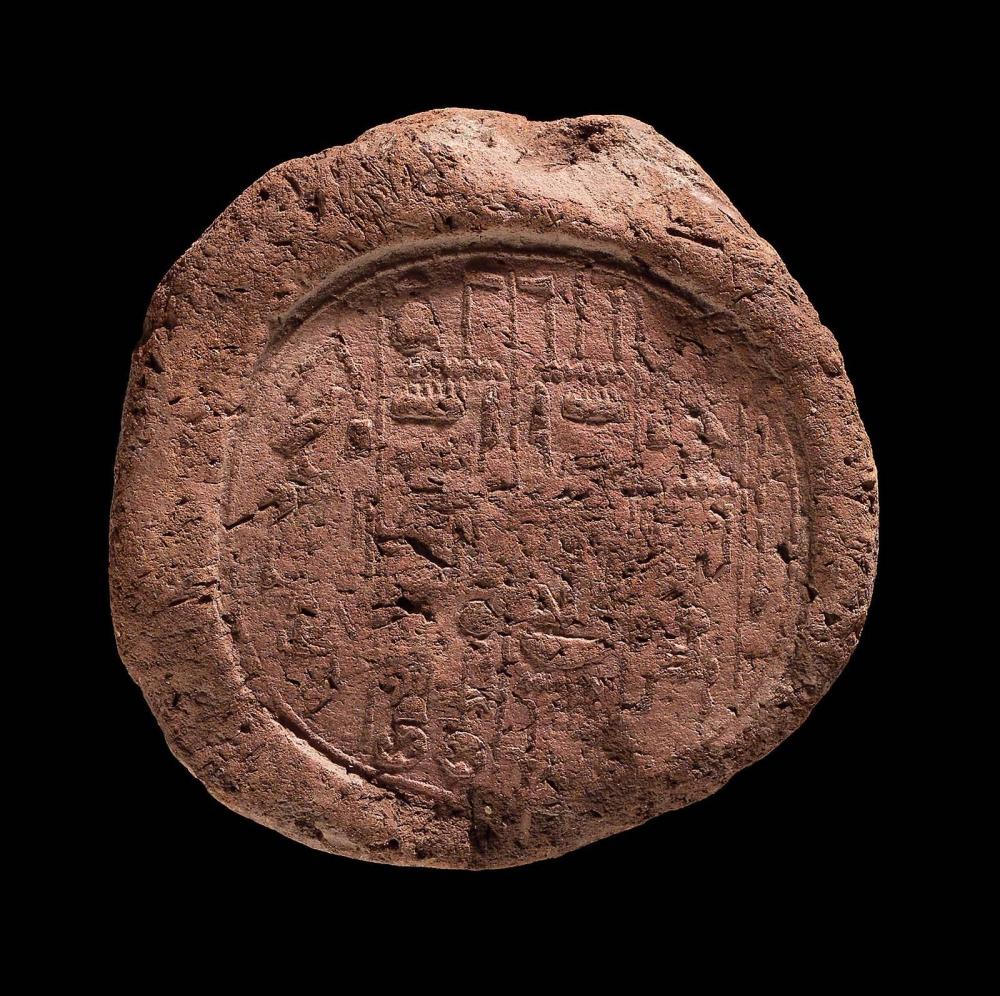Advanced Search 

Funerary cone of Hapuseneb
Egyptian
New Kingdom, Dynasty 18–20
1550–1070 B.C.
Medium/Technique
Pottery
Dimensions
Height x diameter: 4.1 x 8.8 cm (1 5/8 x 3 1/2 in.)
Credit Line
Hay Collection—Gift of C. Granville Way
Accession Number72.1787
NOT ON VIEW
CollectionsAncient Egypt, Nubia and the Near East
ClassificationsArchitectural elements
Catalogue Raisonné
Davies & MacAdam 21
DescriptionFunerary cone of reddish clay; much of tapering cone element broken off and missing. Circular stamp on head with five columns of hieroglyphic text.
Translation of text:
"Hapuseneb
High Priest of Amen, Overseer of Prophets of Upper and Lower Egypt
High Priest of Amen, Overseer of All the King's Works
Hapuseneb
True-of-Voice"
Transliteration:
Hapw-snb
-nTr tpy n Imn imy-r Hmw-nTr nw Smaw MHw
Hm-nTr tpy n Imn imy-r kAt nb(t) n(y)t nswt
Hapw-snb
MAa xrw
Funerary cones were components of a frieze, inserted above the doors of private tombs, particularly in the Theban region. They have been variously interpreted as: name-plates of sorts to identify the tomb owner, decorative memorials, boundary markers for a tomb, dummy bread loaves or meat offerings, symbolic roof beams, or (for the visible circular head) depictions of the sun disk.
Davies and Macadam, A Corpus of Inscribed Egyptian Funerary Cones (1957), type #21.
Translation of text:
"Hapuseneb
High Priest of Amen, Overseer of Prophets of Upper and Lower Egypt
High Priest of Amen, Overseer of All the King's Works
Hapuseneb
True-of-Voice"
Transliteration:
Hapw-snb
Hm-nTr tpy n Imn imy-r kAt nb(t) n(y)t nswt
Hapw-snb
MAa xrw
Funerary cones were components of a frieze, inserted above the doors of private tombs, particularly in the Theban region. They have been variously interpreted as: name-plates of sorts to identify the tomb owner, decorative memorials, boundary markers for a tomb, dummy bread loaves or meat offerings, symbolic roof beams, or (for the visible circular head) depictions of the sun disk.
Davies and Macadam, A Corpus of Inscribed Egyptian Funerary Cones (1957), type #21.
ProvenanceBy 1836: Robert Hay Collection, Linplum, Scotland; 1863: to his son, Robert James Alexander Hay; 1868-1872: Way Collection, Boston (purchased by Samuel A. Way through London dealers Rollin and Feuardent, 27 Haymarket); 1872: given to the MFA by Samuel's son, C. Granville Way.
(Accession date: June 28, 1872)
(Accession date: June 28, 1872)
